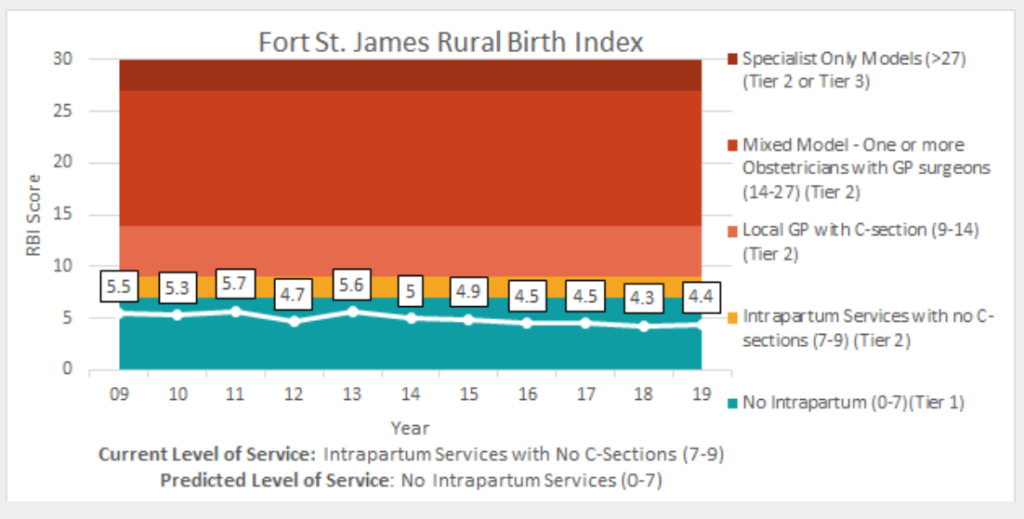Application of Population Catchment to Rural Health Services Planning & Monitoring
Population Catchment Applications In Practice
Rural Birth Index
The Rural Birth Index (RBI) was developed in 2008 by the Centre for Rural Health Research, and was applied to rural communities based on population catchment analysis linked with perinatal services data.24, 25 Each rural community in BC with an active maternity service or history of a maternity service within 10 years was included. An RBI score reflects the level of need for maternity services within a defined catchment population, and was calculated for each community as seen in Figure 6.

The RBI score was parameterized against level of service, and a subsequent framework of comparison was created with corresponding normative levels of maternity service. This work was then extended and applied across rural Australia.26, 27 Most recently, a study was commissioned by the BC Ministry of Health to reevaluate the RBI using data from 2008 to 2019. This work led to the creation of a rolling measure of need for maternity services over time.25 The graph for Fort St James is reproduced below (Figure 7).

This provides a trend line over the past 14 years which strengthens the planning process for future local maternity services. Other relevant data can also be tracked for the population including c-section rate, induction rate, and rates of forceps/vacuum assisted deliveries.
Rural Generalist Provider Services Index
Recent work has consisted of using the level of population need to calculate the demand for local generalist care services, and to parametrize this against the number of physician providers required by the community. This measure is represented by the Rural Generalist Provider Services Index (RGPSI).28 Each community can be assigned an RGPSI score, which can be included in their community catchment profile. The aim of the RGPSI is to better equip healthcare planners with data based on community-need versus an arbitrary assignment of healthcare personnel. Development of this index is ongoing and will be the subject of a dedicated publication.
Impacts of Population Catchment Approach
The application of both the RBI and RGPSI can support planning rationale of health services for the catchment but also underpin quality improvement initiatives. For example, if there is concern about the high c-section rate for the catchment, this could lead to an exploration of the reasons for the frequency of the surgical delivery, the design of an intervention, and the forward tracking of ongoing results. This situation could also inspire the flagging of maternity care as an area for potential improvement, a literature review, and study of comparable communities with lower rates of certain needs or conditions. Most importantly, the local maternity care providers and parturient women and families could work in partnership to understand the problem and change the patterns of care. Allowing communities to have the ability to see their own data and the outcomes of that data within a comparative framework will transform and empower the local health system to change as needed.

